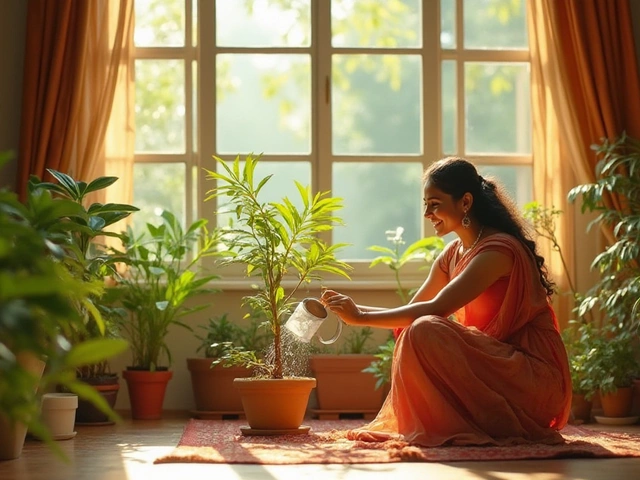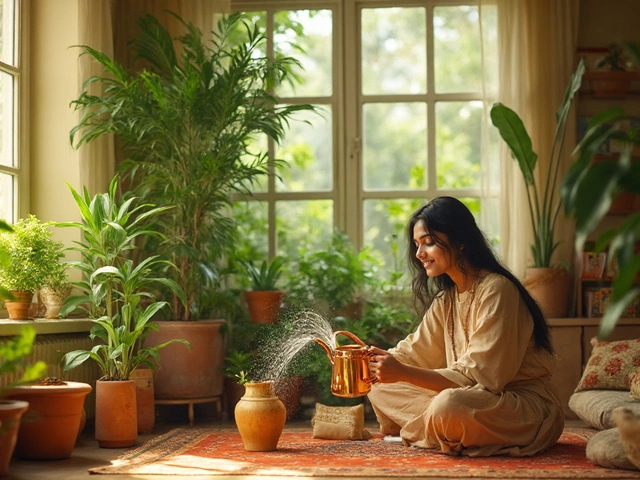Kitchen Garden Orientation: Position Your Edible Space for Maximum Yield
First thing’s first – where you put your kitchen garden decides how well it will grow. Sunlight, wind, and soil type aren’t just buzzwords; they’re the main drivers of taste, size, and health of your veggies. In this guide we’ll walk through the basics of orientation, then give you quick tricks you can use right now.
Sunlight: The Real Powerhouse
Most kitchen veggies need at least 5‑6 hours of direct sun each day. Face your beds toward the south (or north if you’re in the southern hemisphere) to catch the longest stretch of light. If you’re limited by walls or trees, try a raised bed or vertical planters that can be rotated each season. A simple trick – place a small mirror or reflective sheet on the north side of the bed – it bounces extra light onto your plants without any extra effort.
Wind & Airflow: Protect Without Stifling
Strong winds can dry out soil, break stems, and encourage pests. Use a low fence, bamboo screen, or even a row of taller herbs like rosemary to break the wind. But don’t block airflow completely; plants need fresh air to keep diseases at bay. A good rule is to keep the windbreak about half the height of your tallest plant.
Now that you’ve got the big picture sorted, let’s dive into a few practical tips that tie orientation to everyday garden tasks.
1. Plan Your Layout Around Watering. If you’re using drip irrigation (which saves up to 30% water), bury the drip lines about 5‑6 cm deep – deep enough to stay cool, shallow enough for easy access. This depth also protects the lines from garden tools while keeping the water close to the root zone.
2. Companion Planting for Better Health. Pair fast‑growing lettuce with slow‑growing carrots, or plant basil next to tomatoes. These "sister plants" help repel pests and improve flavor. When you orient them side‑by‑side, you also create a micro‑climate that reduces the need for extra watering.
3. Use Soil Amendments to Lighten Heavy Clay. If your garden soil feels compact, mix in a handful of coarse sand or well‑rotted compost. This improves drainage, especially on the wind‑exposed side where water can run off faster.
4. Choose Plants That Fit Your Sun Map. In a spot that gets only 3‑4 hours of sun, go for shade‑tolerant greens like spinach, kale, or coriander. In full‑sun zones, tomatoes, chilies, and cucumbers will thrive.
5. Turn Kitchen Waste into Garden Gold. Coffee grounds are great for acid‑loving plants like tomatoes, but avoid using them on plants that hate acidity (like beans). A thin layer of grounds around the base can improve soil structure without over‑loading nutrients.
Finally, think about sustainability. A mulched garden bed keeps soil moist, reduces weeds, and adds organic matter as it breaks down. If you’re limited on space, vertical gardening lets you grow herbs, strawberries, and even dwarf tomatoes on a wall, freeing up ground space for larger crops.
Orientation might sound technical, but once you line up the sun, wind, and water, the rest falls into place. Start with a sketch of your balcony or backyard, mark the sun path, add a windbreak, and then place your beds accordingly. You’ll notice healthier leaves, bigger harvests, and less time fighting problems that never showed up in the first place.
Give these steps a try this season – a few minutes of planning now can save you hours of watering, weeding, and disappointment later. Happy planting!
Best Orientation for Your Kitchen Garden: Maximize Sunlight and Growth Success
Choosing the right orientation for your kitchen garden can make a massive difference in plant growth and harvest yields. When planning your garden, consider sunlight, wind protection, and space optimization. This article explores various positioning strategies, providing practical tips to enhance productivity. Discover how to use natural elements to your advantage and create a thriving garden.
About
Kitchen Gardening
Latest Posts


Essential Guide to Thriving Indoor Plants Care
By Alden Thorne Jan 21, 2025

How to Take Care of Indoor Plants: Simple Tips for Thriving Houseplants
By Alden Thorne Aug 8, 2025

Most Sought-After Flowers in India's Blooming Market
By Alden Thorne Jan 12, 2025

